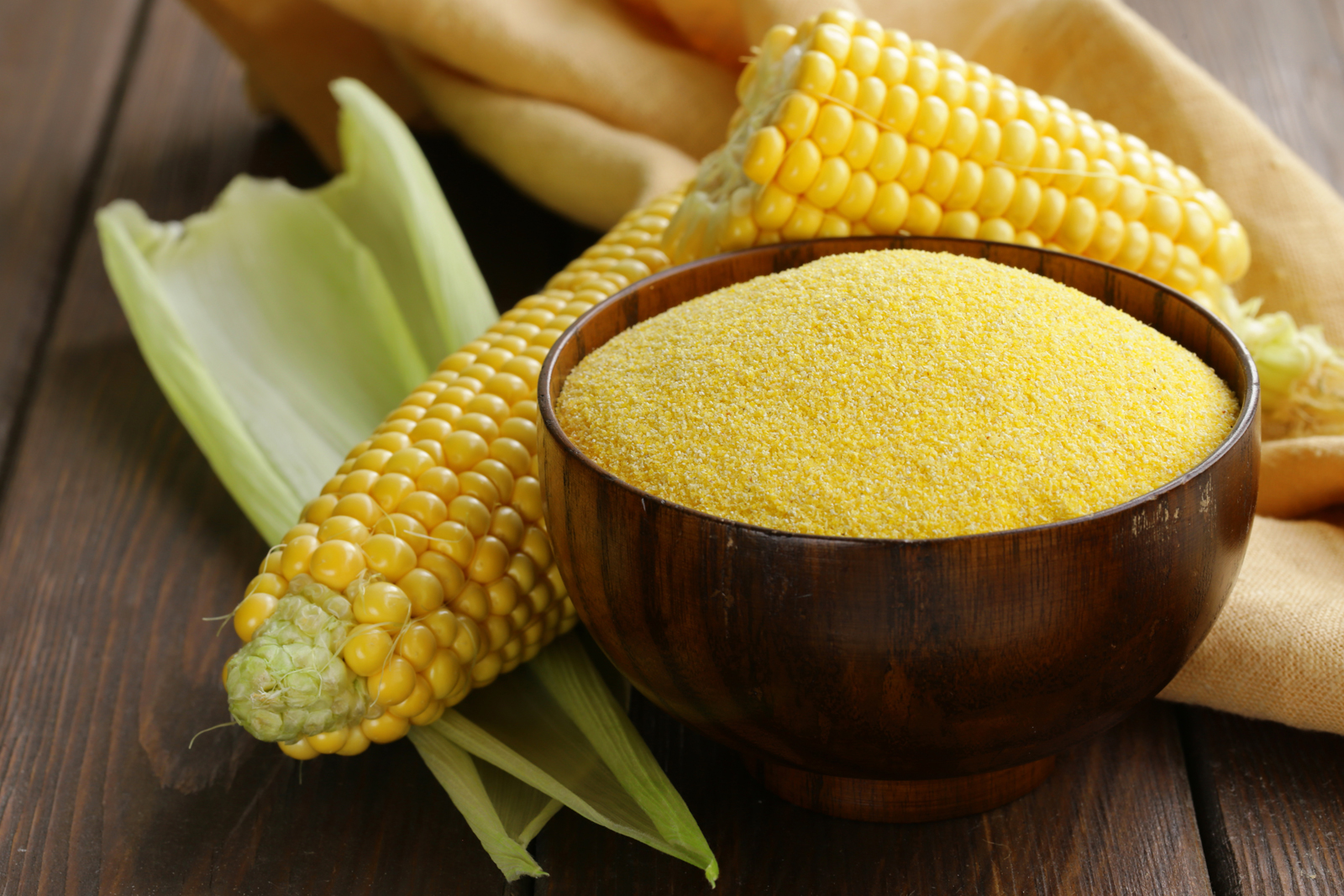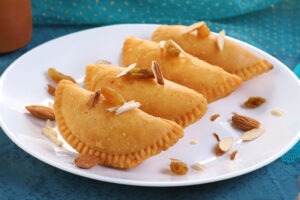Corn (Zea mays) or maize is one of the most popular cereals in the world and forms the staple food in many countries. It’s found as a side dish, in soup, in casseroles, and more. Corn is typically yellow but comes in a variety of other colors, such as red, orange, purple, blue, white, and black. Despite corn’s regular use in our everyday lives, you may not know as much about it as you might think.
This article tells you everything you need to know about corn.
Where Did Corn Come From?
Corn originated in central Mexico in around 5,000 BC. The crop was introduced to Europe in the sixteenth century, from where it spread to Africa and Asia. It is now one of the most widely-grown crops around the world in both temperate and tropical regions.
Description Of Corn
The corn plant possesses a simple stem of nodes and internodes. A pair of large leaves extends off of each internode and the leaves total 8–21 per plant. The leaves are linear or lanceolate (lance-like) with an obvious midrib and can grow from 30 to 100 cm (11.8–39.4 in) in length. The male and female inflorescences (flower bearing region of the plant) are positioned separately on the plant. The male inflorescence is known as the ‘tassel’ while the female inflorescence is the ‘ear’. The ear of the corn is a modified spike and there may be 1–3 per plant. The corn grains, or ‘kernels’, are encased in husks and total 30–1000 per ear. The kernels can be white, yellow, red, purple or black in color. Corn is an annual plant, surviving for only one growing season prior to harvest and can reach 2–3 m (7–10 ft) in height.
The 4 Basic Types Of Corn:
- Dent Corn – Dent corn, also called field corn, is the most widely grown corn in the U.S. It is used primarily for livestock feed, but it is also used in some food products. It contains a mix of hard and soft starches that become indented once the corn is dried, thus the name “dent” corn
- Flint Corn – Flint corn, also known as Indian corn, is similar to dent corn. It has a hard outer shell and is distinguished by a wide range of colors. It is grown mostly in Central and South America and used primarily for decoration in North America around harvest time.
- Popcorn – Popcorn is a type of flint corn but has its own size, shape, starch level and moisture content. It has a hard exterior shell and a soft starchy center. When heated, the natural moisture inside the kernel turns to steam and builds up enough pressure that it eventually explodes. Other types of dried corn may burst open slightly when heated, but not like popcorn. Popcorn is unique in its taste and popability.
- Sweet Corn – Sweet corn, or “corn on the cob,” is almost all soft starch and will never pop. It contains more sugar than other types of corn. Unlike other corns that are picked when the kernels are dry and mature, sweet corn is picked and eaten while the ears are in the immature milk stage and the kernels are tender.
Nutrition Facts Of Corn
According to the USDA National Nutrient Database, corn not only provides the necessary calories for healthy, daily metabolism but is also a rich source of vitamin A, B, E, and many minerals. Its high dietary fiber content ensures that it plays a significant role in the prevention of digestive ailments like constipation. The antioxidants present in it also act as anti-carcinogenic agents and prevent Alzheimer’s disease.
10 Marvelous Health Benefits Of Corn
- Good for healthy eyes – Corn has high content of beta carotene which forms Vitamin A in the body and as we all know Vitamin A is good for our vision so, having corn will definitely help in keeping our eyes healthy. We also find carotenoids, lutein and zeaxanthin which reduce the risk of macular degeneration and also lessens the development of cataract.
- Slowing down bone loss – Another type of Vitamin A that is beta – cryptoxanthin is good for slowing down bone loss which is associated with age. When the process of bone loss is slowed down it reduces the chance of rheumatoid arthritis as well.
- During pregnancy – Corn has high content of folic acid, therefore pregnant women are prescribed to have corn in order to meet up the folic acid requirement during pregnancy.
- Helps in digestion – Corn is rich in both soluble and insoluble fiber which helps our digestive system and also helps common digestive problems like constipation and hemorrhoids.
- Healthy heart – Corn grain is a rich source of folate which is a type of B-Vitamin helping in reducing homocysteine. It is an inflammatory marker which is attributed to many heart diseases. If you want to reduce the risk of developing heart diseases or any other cardiovascular related diseases then you must have diet which is high content of folate.
- Proper functioning of body – Corn has thiamin which is a type of Vitamin B1 which is helpful in converting carbohydrates into energy and also essential for proper functioning of muscles and nervous system.
- Helps you gain strong connective tissues – The connective tissues consist of bones, ligaments, muscles, tendons and cartilage. Manganese is believed to strengthen the connective tissue and therefore having corn will be helpful as it is full of manganese. Manganese is also helpful in keeping the blood sugar stable and provides energy by breaking down the carbs and fat.
- Helps in fighting tumors – Corn has high contents of anti-oxidants which help in fighting cancer and eliminating the free radicals which causes cancer. With the high amount of phenolic compound, ferulic acid that are present in corn makes it suitable in fighting tumors in breast and liver.
- Good for diabetes and hyper tension – Photochemical controls the absorption and release of the insulin in the body thus helping the diabetic patient to maintain a healthy life as it reduces the chances of sudden high or low in sugar level. The Vitamin B content in corn helps it to prevent the stress level.
- Lowers bad cholesterol – There is ample amount of anti-antherogenic in the corn oil which helps in lowering the bad or LDL cholesterols.
10 Little Known Facts About Corn
- Corn is produced on every continent of the world with the exception of Antarctica.
- Grits are small broken grains of corn. They were first produced by Native Americans centuries ago.
- Before Christopher Columbus’s voyage to North America, corn was grown only by the Indians of North, Central and South America.
- Petrified corn cobs that are over 5000 years old have been found in ancient Indian villages in the Western hemisphere.
- When Columbus’s ships landed in what is now the West Indies, he traded with the Indians and took corn home with him to Spain.
- The Indian name for corn was MA-HIZ which the early settlers began to call maize.
- The Indians of North America helped save the settlers from starvation during their first winter in America by providing them with corn to eat. After that first hard winter, the settlers were taught by the Indians how to grow corn by planting corn kernels with small fish for fertilizer.
- The Indians also shared their methods of preparing corn with the settlers. This included corn bread, corn pudding, corn soup and fried corn cakes.
- Corn was so valuable in the days of the early settlers that it was used as money and traded for meat and furs.
- Corn is completely domesticated, it cannot exist as a wild plant.
Word of Caution:
Corn does contain large amounts of fatty acid, so for people who are already at high risk of heart diseases, excess corn or corn oil can dangerously exacerbate those conditions and risks. Also, corn is frequently turned into high fructose corn syrup, which is extracted from corn to use as a sweetener. It is worse than table sugar and is a cause of obesity, as well as has a negative impact on your blood sugar levels.
About Corn
Maize or Corn forms the staple food in many countries worldwide. It is packed with many nutrients and health benefits. Corn comes in a variety of colors. It is also added to many side dish etc.
Article References:
- https://www.organicfacts.net/health-benefits/cereal/health-benefits-of-corn.html
- https://www.healthline.com/health/food-nutrition/is-corn-a-vegetable
- https://plantvillage.psu.edu/topics/corn-maize/infos
- https://whatthafact.com/nutritional-benefits-of-corn/
- http://www.bdspublishing.com/_webedit/uploaded-files/All%20Files/Maize%20intro.pdf
- https://www.popcorn.org/Different-Types-of-Corn








1 Comment